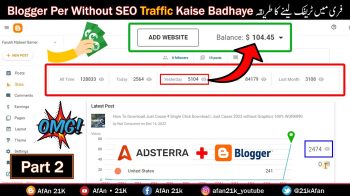Modern businesses that embark on social media marketing may claim to procure higher sales and profits through increased traffic to their websites. But no one could really calculate the actual returns on investment which social media marketing (SMM) could generate.
There are various takes on calculating SMM ROIs as different industries offer different formulations in such calculations. Traditional investments such as real estates and market investments could be easily computed on ROIs but it may prove complex with SMM.
A Unique Condition
Social media networks are known to be excellent marketing platforms that could generate high traffic to web business sites to be converted into business customers. However, it would be difficult to measure the effectiveness of SMM in terms of ROIs as returns from a specific marketing strategy could never be measured primarily on profits alone as there are many factors involved.
Even if the sole objective is just sales to simplify the matter, the generated ROI would not reflect accurately the desired components. This would render the figures useless as it is not the right representation of the matter. A clearly defined business objective with its underpinning factors would generate a return on investment figure that would be more accurate to accept and interpret.
Certain marketing campaigns may identify an increase in sales as the desired return on investment through SMM although the increased figures may pose to be a secondary benefit for the business. The business may indicate an increased generation of potential leads or more subscribers as well as higher traffic flow to the web business site as the main objective in SMM ROI.
These would constitute as vague measurements of SMM ROI as the figures contributed from the various quarters could not be separate entities with a strong play factor on each other. Hence, many businesses are content with an increase in more leads, greater brand exposure, higher traffic, more sales, longer subscriber list, more customers and more profits.
Every factor is a potential ROI contributor via SMM but none is able to stand on its own. For example, more subscribers need not contribute to higher sales if the new subscribers did not make any purchases, although they did opt into the business mailing list as subscribers. Time is required to convince and convert these new subscribers from potential leads to paying customers.
Most businesses that manipulate SMM and want an account of its ROI must narrow down the long list of potential contributors. This would help satisfy business owners or marketers that SMM is indeed effective to boost the business, company or brand in its intended objectives.
It would be extremely difficult to portion out the precise percentage of contributions from the host of contributing factors mentioned. Just like any science experiment that has controlled variables and manipulative variables, a detailed and precise SMM ROI computation could be time consuming and costly with different manipulative variables activated in different marketing campaigns to make the proper comparisons and conclusions.
Further Considerations
A science experiment is easier to monitor as well as identify the final outcome based on controls and preferred manipulated variables as the experiment duration is usually short and manageable. There are also precedents with results to compare and contrast which are not possible with SMM ROIs.
A SMM ROI is challenging if it were treated like a science experiment where all other factors are controlled with one preferred factor as the variable. A fair conclusion would only be generated with all factors tested on similar marketing campaigns which would be costly to the business.
Moreover, such an approach would not be suitable for different businesses in different industries. It is not fair to compare the SMM ROI of different businesses, even if they are in the same industry as the scope and dynamics differ to allow a generic conclusion. This would make the SMM ROI results inaccurate and unacceptable.
Simple ROI Computation
To keep things simple and measurable, businesses engaging in social media marketing are using straightforward objectives as a means of calculating SMM ROI. A simple yet effective business objective in SMM would be to offer free videos or e-books in an attempt to build the business mailing list. This would allow the business marketers to measure the SMM ROI generated from the number of recipients or opt-ins to this business offer.
The collection of potential leads information is vital and useful to the business growth and expansion. Strong customer relations could be developed from such important prospect information that benefits the business.
This type of SMM ROI computation could be measured effectively using auto responder analytics and other online measuring tools that are free or paid. These tools are helpful in tracking the origins of potential leads and the pages visited on the web business sites or blogs as well as Facebook Fanpage. Further useful statistics for the business include the amount of time spent at each location.
Business owners and marketers could track the number of subscribers who are converted into purchasing customers and identify the types of products or services procured. This would help the business owners and marketers to focus on saleable items that would boost bottom lines. Better marketing campaigns could be planned to draw in more potential leads from the measurable results obtained.
An easy math of subtracting the number of subscribers opted out from the number present in the mailing list would generate a net figure of viable potential leads for the business. If a monetary worth is placed on every subscriber or customer based on the business operational formula, a net worth of profits would be revealed. This could be concluded as the ROI from the SMM efforts of the business for that particular marketing campaign in that season.
Greater SMM ROI accuracy could be achieved by factoring in projections of new customer purchase frequency. Past analytics would be helpful to generate realistic projections. When this value is divided by the SMM investments, the result would be the ROI of the marketing campaign.
However, there may be a final ROI value which certain businesses may be interested in. This would include social media assets in progress.





